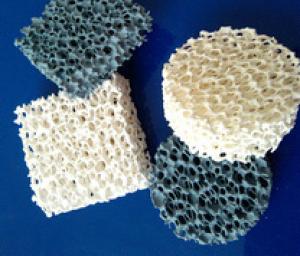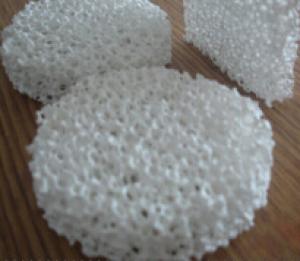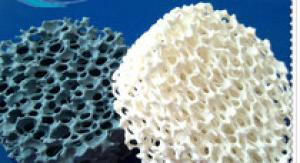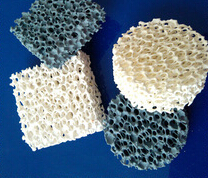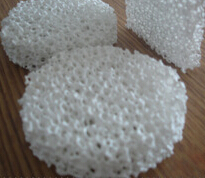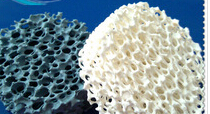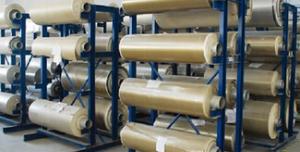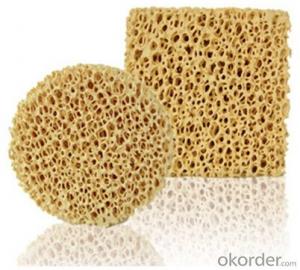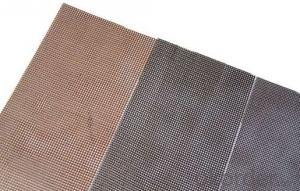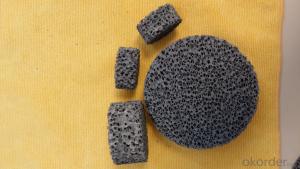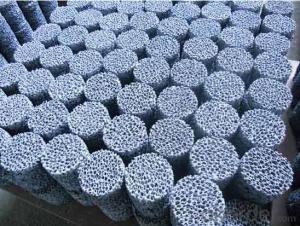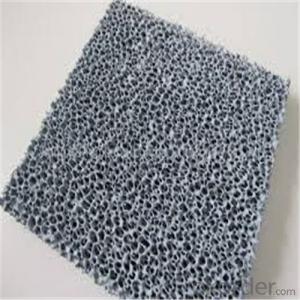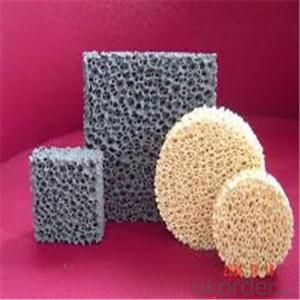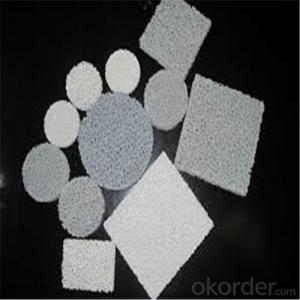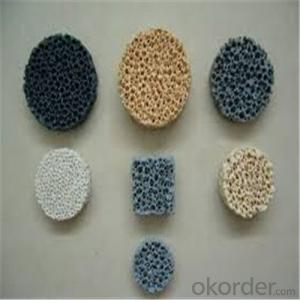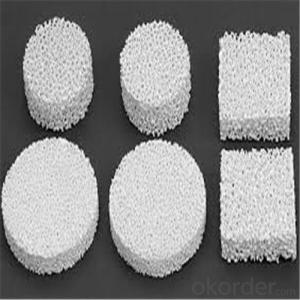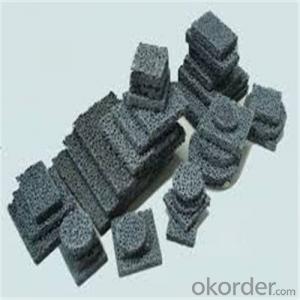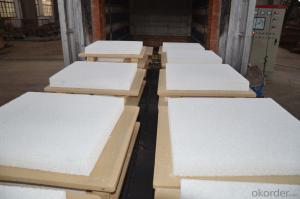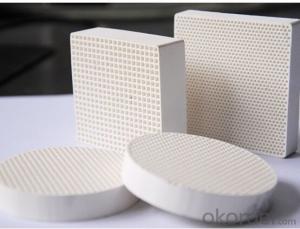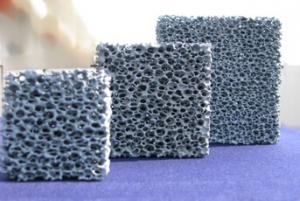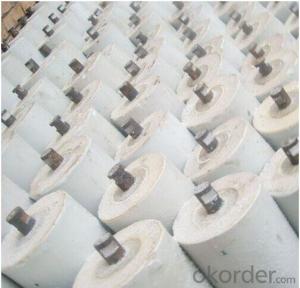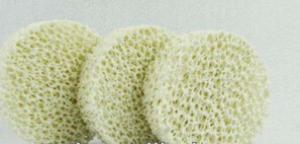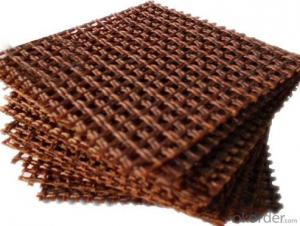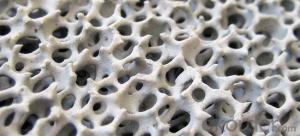Ceramic Filter Plate for Foundry Ceramic Foam Filter
- Loading Port:
- China Main Port
- Payment Terms:
- TT OR LC
- Min Order Qty:
- -
- Supply Capability:
- -
OKorder Service Pledge
OKorder Financial Service
You Might Also Like
Specifications
1.High porosity, low loss of thermal shock, high mechanical strength.
2.Pore density PPI:10-40
Ceramic Foam Filter
1. Introduction:
Foam Ceramic are mainly used for filtration of aluminium and aluminium alloys in foundries and cast houses . With their excellent thermal shock resistance and corrosion resistance from molten aluminum, they can effectively eliminate inclusions, reduce trapped gas and provide laminar flow, and then the filtered metal is significantly cleaner. Cleaner metal results in higher-quality castings, less scrap, and fewer inclusion defects, all of which contribute to bottom-line profit.
SIC Ceramic Foam filters are just developed as a new type molten metal filter to decrease casting flaw in recent years. With its characteristics of light-weight, high mechanical strength, large specific surface areas, high porosity, excellent thermal shock resistance, erode resistance, high-performance,SIC Ceramic Foam filter is designed for filtering impurities from molten Iron & Alloy, nodular cast iron castings, grey iron castings and malleable castings, Bronze casting, etc.
2. Size available:
7", 9", 12", 15", 17", 20", and 23", with porosities from PPI 10 to PPI 60(PPI ie pores per inch).
Other special sizes could be produced on request.
3. Material Specifications
4.1 SIC Physical Properties:
Porosity(%) | 80~90% |
Working Temperature | ≤1500°C |
Bending Strength(Mpa) | 0.8 |
Compression Strength(Mpa) | 0.9 |
Thermal Shock Resistance | 1100°C---room temperature 6 times |
Volume Density | 0.4-0.5g/cm3 |
4.2 Alumina Physical Properties:
Working | ≤1200°C |
Porosity | 80~90% |
Compression Strength | ≥1.0Mpa |
Volume Density | ≤0.5g/cm3 |
Thermal Shock Resistance | 800°C---Indoor temperature 5 times |
Application | non-ferrous and alumina alloys, |
5. Pouring Rate and Filtration Capacity
1) Alumina Ceramic Foam Filters
| Dimensions(mm) | Dimensions(inch) | Pouring Rate(kg/s) | Filtration Capacity(ton) |
| 178x178x50 | 7x7x2 | 0.2-0.6 | 5 |
| 228x228x50 | 9x9x2 | 0.3-1.0 | 10 |
| 305x305x50 | 12x12x2 | 0.8-2.5 | 15 |
| 381x381x50 | 15x15x2 | 2.2-4.5 | 25 |
| 430x430x50 | 17x17x2 | 3.0-5.5 | 35 |
| 508x508x50 | 20x20x2 | 4.0-6.5 | 45 |
| 585x585x50 | 23x23x2 | 5.0-8.6 | 60 |
2) Zirconia Ceramic Foam Filters
| Dimensions(mm) | Pouring Rate(kg/s) | Filtration Capacity(kg) |
| 50x50x22 | 3-5 | 30 |
| 50x75x22 | 4-6 | 40 |
| 75x75x22 | 7-12 | 60 |
| 75x100x22 | 8-15 | 80 |
| 100x100x22 | 14-20 | 100 |
D50x22 | 2-6 | 18 |
| D80x22 | 6-10 | 50 |
| D90x22 | 8-16 | 70 |
3) Silicon Carbide Ceramic Foam Filters
| Dimensions (mm) | Pouring Rate(kg/s) | Filtration Capacity(ton) | ||
| Grey Iron | Ductile Iron | Grey Iron | Ductile Iron | |
| 40x40x22 | 4 | 3 | 65 | 32 |
| 50x50x22 | 6 | 4 | 100 | 52 |
| 75x50x22 | 9 | 6 | 150 | 75 |
| 75x75x22 | 14 | 9 | 220 | 100 |
| 100x50x22 | 12 | 8 | 200 | 100 |
| 100x75x22 | 18 | 12 | 300 | 150 |
| 100x100x22 | 25 | 16 | 400 | 200 |
| 150x150x22 | 50 | 36 | 900 | 450 |
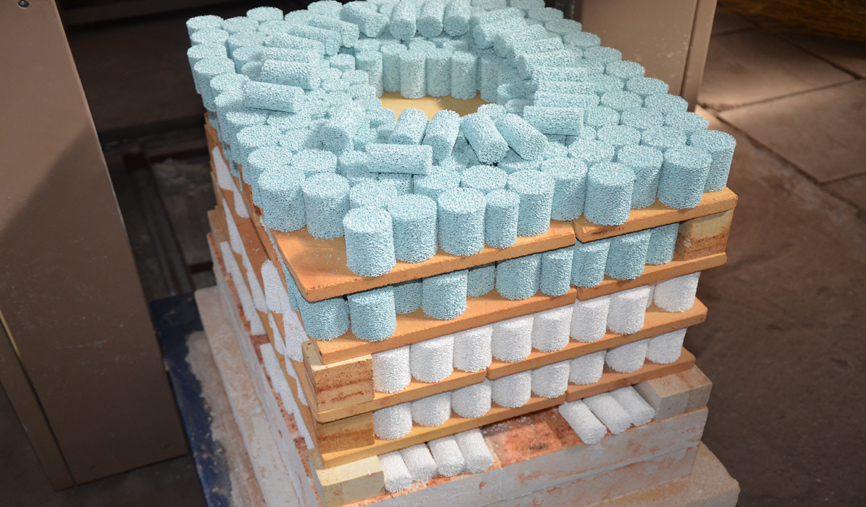
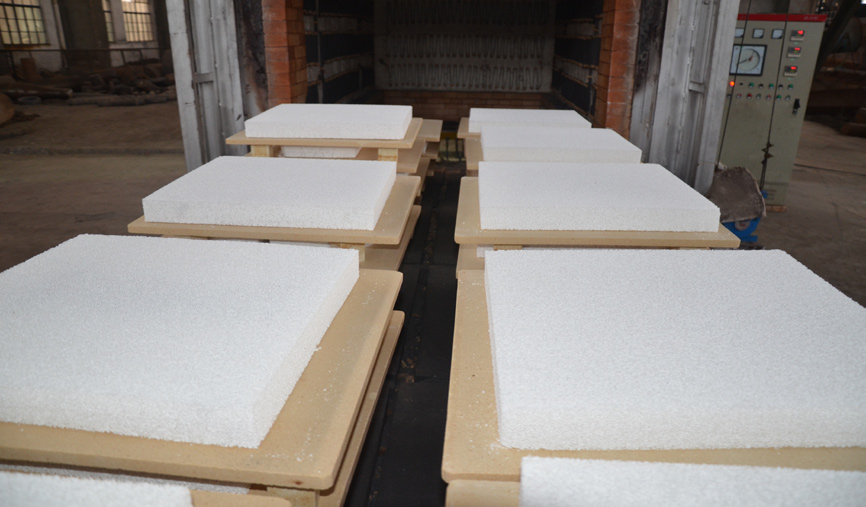
- Q: Performance advantages of ceramic filter
- A ceramic filter for fine coal mud recovery, there is a base, the lower part of the frame is provided with a fine slime liquid trough, the fine slime liquid material groove is provided with a liquid level controller, the slime liquid material at both ends of the groove is provided with a negative pressure water tank, the water tank is provided with a negative pressure suction connection assembly fixing the other side is provided with a vacuum pump pipeline, the pipeline is communicated with a vacuum pump and vacuum pump;
- Q: What are the poor filtration effects of vacuum disc filters?
- The spindle speed is slow, the formation time of growth in the area of vacuum filter cake, production capacity increased gradually, but because the unit time of grout thickness and spindle speed slow is proportional to, so the ceramic filter capacity in a range of showing the highest.On the other hand, as the spindle speed slows down, the thickness of the slurry is thickened, and the moisture of the concentrate is also affected. For viscous material, ceramic filter with ceramic plate to work as filter media, when the cake is formed gradually into the porous filter medium filter cake itself, and the cake is not easy to form a viscous material, forming a dry cake appearance does not slow, the spindle speed is easy to reduce the water content of concentrate. Similarly, the spindle speed is accelerated, the cake formation time in the vacuum zone is shortened, and the slurry thickness is reduced, and the material can be improved for the easy molding material. But the spindle speed is too fast to be cleaned after each cycle of the ceramic plate. As for the viscous material, the cake is difficult to form after the spindle speed increases, and it will affect the capacity. Therefore, the use of ceramic filter should focus on the inherent nature of the concentrate to explore the best spindle speed.
- Q: What is the filtration accuracy of 50nm ceramic membrane?
- It should be noted that due to wear, plugging and so on, the new and different degrees of ceramic film, the pore size will change. Micron scale ceramic membrane filtration accuracy is very good, nano scale aperture range of such a small ceramic film does not know in what way.
- Q: What are the materials that make up the ceramic mold?
- At present, the commercialized porous ceramic membranes are mainly composed of 3 types: flat plate, tubular and multi channel. Flat film is mainly used for small-scale industrial production and laboratory research. The tubular membrane is combined with rice to form a heat exchanger similar to a column tube heat exchanger, which can increase the loading capacity of the membrane, but is gradually withdrawn from industrial application due to its strength problem. The size of the applied ceramic membrane usually adopts a multi channel configuration, that is, a plurality of channels are distributed on a circular cross-section, and the number of general channels is 7, 19 and 37. The main business of the inorganic ceramic membrane preparation technology: using solid particle sintering preparation carrier and microfiltration membrane by sol-gel method in the preparation of ultrafiltration membrane: glass membrane by phase separation method: using special technology (such as chemical vapor deposition, electroless plating, etc.) the preparation of microporous membrane or dense membrane. Its basic theory involves colloid and surface chemistry, material chemistry, solid state ion science, material processing and so on.
- Q: Can the plate filter press pass through the filter plate?
- There are many types of pumps to be used, such as screw pumps, slag pumps, rotary pumps, piston pumps, and diaphragm pumps.
- Q: What is the working pressure of the ceramic filter?
- Vacuum pressure or suction is the vacuum of the equipment, the size of the vacuum directly affects the effect of ceramic filter board suction (yield and water content). The vacuum system of ceramic filter consists of vacuum pumps, tanks, distribution device, ceramic filter plate and a connecting pipe is composed of ceramic filter, the vacuum pump is generally 2BV series water circulation pump, the vacuum pump vacuum limit is -0.097MPa, using a vacuum pump for a long time or vacuum system has poor sealing performance may cause a certain degree of vacuum distortion, so the ceramic filter vacuum is generally difficult to achieve in the -0.097MPa, -0.08 ~ 0.097MPa, which indicates that the vacuum degree is good, such as the vacuum degree is not up to -0.07MPa or less, the vacuum system may be an exception.
- Q: Ceramic filter capacity.
- You ask too general, to say processing capacity (ie capacity), at least to provide material conditions, such as: material name, concentration, particle size distribution. In addition, the basic conditions of equipment operation should be taken into account.
- Q: What is the reason that the whole ceramic filter does not attract ore?
- Vacuum system failure, no vacuum or vacuum can not meet the requirements. Should check the vacuum pump and vacuum piping, distribution head, ceramic plate, such as failure or leakage.Whether the ore conditions are changed, such as pulp type, mud content, fineness, concentration, etc..
- Q: What is the backwashing pressure of the ceramic filter?
- It should be said that the ceramic filter backwash, usually with a certain pressure of clean water to backwash.
- Q: How should the static and dynamic sealing points of the ceramic filter be leaking?
- When the ceramic filter works, the operation may be as follows: 1. The feed is injected and the pulp is injected into the tank of the ceramic filter. 2, mixing system, ceramic filter stirring rake back and forth mixing, driven by mixing reducer. 3, spindle rotation, material level reached a certain range, through the spindle speed machine to drive the ceramic filter disk rotation.
Send your message to us
Ceramic Filter Plate for Foundry Ceramic Foam Filter
- Loading Port:
- China Main Port
- Payment Terms:
- TT OR LC
- Min Order Qty:
- -
- Supply Capability:
- -
OKorder Service Pledge
OKorder Financial Service
Similar products
Hot products
Hot Searches
Related keywords
